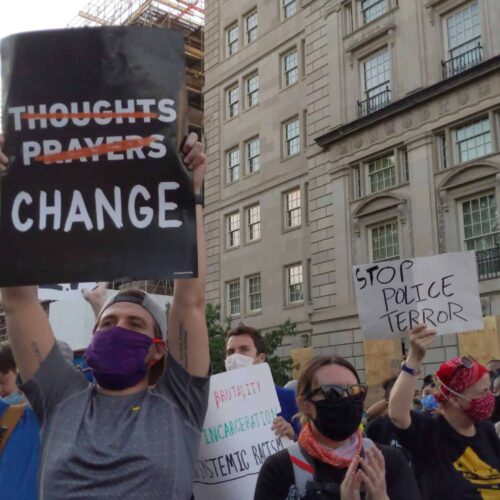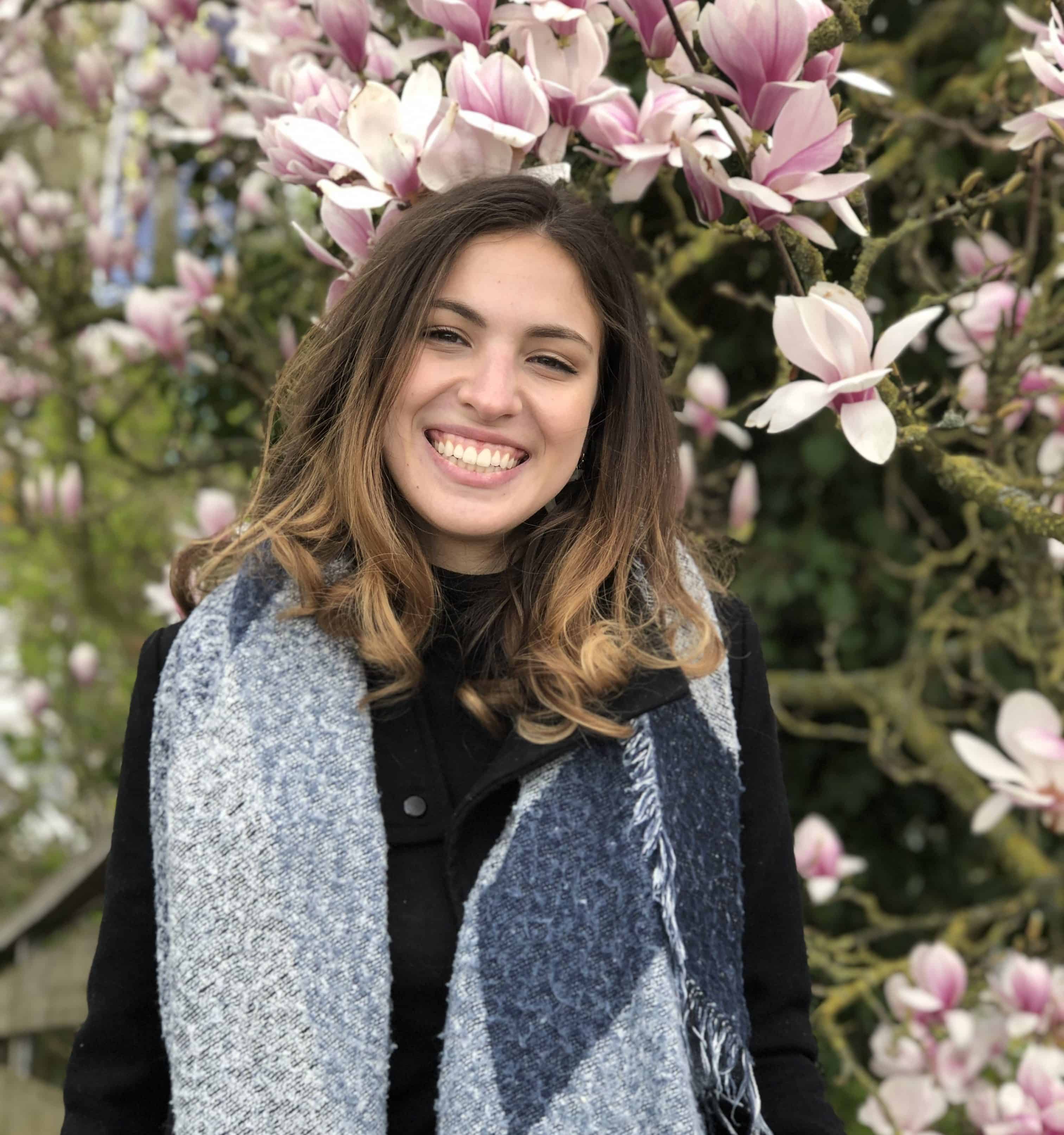Introduction
Hi Watchdogs, and welcome back to your favorite newsletter. It’s been an intense week of protests against police brutality here in the U.S. and around the world. ✊It’s hard to make sense of this current moment, but we’ll help you through it.
This week, we have an analysis from our CEO Susan Smith Richardson, a closer look at police unions and what’s happening on the ground in D.C. (If that wasn’t enough, we have some extra reading for you too from experts on racial disparities. Let’s get started.)
Two sides of the same coin: Before he was killed by a white police officer in Minneapolis, George Floyd lost his job because of the coronavirus pandemic.
Millions of African Americans have experienced the same. A new report by the Economic Policy Institute states that racial and economic inequality have made Black workers, who comprise about 12 percent of the workforce, most vulnerable to the coronavirus. (Tweet this link)
Flashback: Other moments that addressed economic and racial inequality include the acquittal of police officers who beat Rodney King in 1992 and in Ferguson, Missouri, after a police officer killed Michael Brown in 2014. George Floyd, Breonna Taylor and Ahmaud Arbery remind us that some things have not changed and the coronavirus has pushed the same unfinished agenda from turmoil from decades ago. Our CEO has a full analysis of the current moment.
Meanwhile: As protests continue across the country, big labor sides with police unions.
Why that’s an issue: Police unions have written labor contracts that bar law enforcement agencies across the country from immediately interrogating or firing officers after egregious acts of misconduct. Leaders of the country’s other labor unions are tiptoeing around the subject as their members join protests this week over the killing of George Floyd. (Tweet this link)
Related: Only 100 (yep, you read that right) hate crimes were pursued by federal prosecutors nationwide between January 2010 and July 2018. And half of those cases involved racially motivated violence against Black people, which is more than any other group. (Tweet this link)
💐On June 5, Breonna Taylor would have been 27. Here’s where her case stands now.

📍On the ground in Washington, D.C.
The city had endured a few rough nights at first, but overall the protests outside the White House across the city have been mostly peaceful.
DCist reports that attendees, including a 9-year-old, say the tear gas, rubber bullets, pepper spray capsules and flash bombs were used to clear Lafayette Square Park without warning. Now, Black Lives Matter D.C. is suing President Donald Trump, Attorney General William Barr and head of military and law enforcement for violating constitutional rights. Why did Trump do this?
High and mighty: So he could…hold up a Bible? On Monday evening, the president held a photo op at St. John’s Episcopal Church just after officers used tear gas against peaceful protesters outside the White House. (via NBC News)
D.C. Mayor Muriel Bowser told reporters on Thursday that for the first time this week, no curfew was in place and there were no arrests on Wednesday. (via The Hill)
Bowser also sent a letter to Trump requesting that he withdraw all “extraordinary federal law enforcement and military presence.” Activists plan to continue protests through the weekend.
Related: The arrest and detention of thousands nationwide is heightening the risk of the coronavirus spread in the broader community. (via POLITICO)
🏳️🌈Y’all thought we forgot about pride? Protesters also rallied outside of the Stonewall Inn in New York City, the site of demonstrations that took place after a police raid at the gay club in the 1960s.
In case you thought we forgot about the coronavirus, too: Opioid-related deaths have doubled since this time last year in Chicago, and similar increases are happening across the country. COVID-19 appears to be making the crisis worse. (via ProPublica)
Media blitz: As trust in the news media wanes, journalists are being attacked, arrested and harassed while trying to report on the protests. Take Linda Tirado, who was shot in the eye while covering the Minneapolis protests. And a reporter in Louisville was hit by a pepper ball on live television by an officer, causing her to yell: “I’m getting shot! I’m getting shot!”(via The New York Times)
The scariest part? They’re not alone. U.S. police have attacked journalists more than 130 times since May 28. (via NiemanLab)
We don’t rely on ads. Help our reporting during this critical time.
We can’t do this work without your support.
This week we’re talking with our CEO Susan Smith Richardson on race, inequality, and policing and how to make sense of what’s happening with these protests. Susan led reporting teams that covered the aftermath of the unrest in Los Angeles following the police beating of Rodney King and the protests in Chicago in 2015 after a police officer killed teenager Laquan McDonald.
Journalists have been here before with this story, and we haven’t always gotten it right. How can we cover it differently?
We have to learn how issues connect, and then report about solutions or responses to the problems of the day. The protests today are different. They are playing out in a pandemic. But the issues underlying them are generations in the making –– racism, income inequality, police brutality and white supremacy. Police violence isn’t just about policing, any more than it is about a single police officer or a few bad apples on the force. The violence is interconnected, and it’s about systems and policies.
I was talking to some members of Black Lives Matter on a conference call yesterday. They emphasized that journalists need to report about the protests from a solutions angle. What’s driving the protests, and what do folks think should be done? I couldn’t agree more. So much of what we do is identify what is broken. Of course, our job is to expose problems, but when it comes to police violence, we need to spend more time covering responses. I mean report about big ideas for change like defunding police departments. That’s good journalism, and journalism that can speak to this moment.
How do you develop expertise in reporting about race and inequality?
I have always asked sources, “What should I check out to get a better understanding?” I was on a panel a few years ago with Nikole Hannah-Jones of the New York Times. She said if you want to understand race in America, you need to know the laws that affect it. That’s the bottom line. When I was in Chicago, there was a powerful group of academic-activists who believe that if you care about affecting change, your work has to be informed by a deep knowledge of the history of social and racial justice movements in this country. If we want to cover movements for justice today, we need to know the history.
What have you learned from covering issues like this in the past?
A year after the unrest in Los Angeles, we sent some reporters to look at efforts to rebuild South Central, the part of the city that bore the brunt of the disturbances. The reporters did some serious grass-roots reporting. They dug into what people were doing to invest in and rebuild their community. We intentionally skipped spending a lot of time with elected officials or well-known community leaders. Nothing substitutes for talking to people who are directly affected by an issue. As people hit the streets now in the name of justice and equality, our job is to tell that story accurately, contextually and authentically. We cannot do that if we don’t understand the communities that are living with inequality every day.
The takeaway: Reporting on solutions moves the needle.
A lot of you are probably wondering what you can do to be a better ally. 🤔
For one, don’t just post a black tile to your Instagram page. Seriously, don’t.
A good place to start: Your reading list from our CEO Susan Smith Richardson:
- “White Fragility” by Robin DiAngelo, in which DiAngelo digs into white peoples’ defensiveness over challenges to their ideas about race –– and how that phenomenon props up racism. (via The New Yorker)
- “From Here to Equality” by William A. Darity Jr. and A. Kirsten Mullen is about how Black reparations can erase the racial wealth gap, and why that’s important (especially in the age of the coronavirus pandemic.)
And try buying these books from black-owned bookstores.
Also: You can sign up for election reminders, get registered to vote and apply for an absentee ballot here. And if you’re already registered, get out there and do the dang thing.
If you liked these recs, we have more on the way. Stay tuned for our new newsletter, The Moment, a deep dive into how race and inequality are driving this moment in America.
Related: Just this week, Councilwoman Ella Jones was elected the first Black mayor of Ferguson, Missouri. The city became nationally known after the 2014 police killing of Michael Brown, an unarmed 18-year-old Black man.
When asked what this election means for Ferguson’s Black residents, she said: “One word: inclusion.” (via St. Louis Post-Dispatch)
Thanks for reading until the end. Are you attending protests this weekend? Reply to let me know. Be safe, and see you next week.
Read more in Inside Public Integrity
Watchdog newsletter
Words matter: Was the attack on the Capitol a rally, protest or insurrection?
The question remains how history will record the events that resulted in mayhem at the U.S. Capitol.



Join the conversation
Show Comments